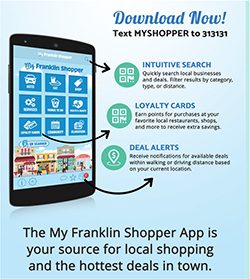Children and parents often look forward to the dawn of a new school year. But before the first homeroom session can take place, parents may need to take their students clothes shopping.
According to a 2018 survey by Deloitte, parents spend an average of $510 per household on apparel, school supplies, electronic gadgets, and other items for their kids’ return to school. The back-to-school season runs from July through September, during which American households alone spend $27.6 billion, which is second only to the holiday season in regard to the most lucrative times for retailers.

Apparel is a large part of back-to-school shopping. Many parents find they need to outfit their kids with a new wardrobes each year. Jeans and leggings that fit like a glove in June may only reach mid-calf by Labor Day. To make the shopping process less harried and more productive, parents can employ these strategies.
Take inventory
Go through kids’ wardrobes and see what can be salvaged and what might need to go. This is the perfect opportunity to put aside gently used, outgrown items that may be passed on to someone else who can use them. Be sure to make a list of any items that the school requires, particularly in regard to uniforms or dress codes. By knowing what’s in stock in the closet, you’ll have a clear idea of what you need to buy.
Check for tax-free discounts
Some states or cities offer tax-free or discount shopping incentives, which can add up to considerable savings. It may be well worth the effort to stock up on necessities during these times.
Sign up for loyalty programs
If yours is a child who prefers certain brands, sign up early in the year for such brands’ loyalty clubs. For example, the popular retailer Hollister has Club Cali that, with each purchase, grants points toward discounts. Plus, you may be privy to sale advertisements before the general public.
Get enough to get by
While certain clothing sales happen between July and August, oftentimes the real savings begin in October, according to the budgeting resource Money Crashers. Wait until that time to buy the bulk of kids’ school clothes. After all, the first weeks of school are usually warm, and summer clothing will still suffice with a few new items thrown in to freshen up wardrobes.
Invest in quality shoes
Sneakers and other shoes can be expensive. However, investing in quality brands can help you avoid having to buy shoes frequently. Watch for shoe sales and stock up on coupons. Many stores offer “buy-one, get-one half off” during the back-to-school season. In addition to these tips, save more by shopping overstock stores or warehouse clubs for name-brand items at lower prices.







